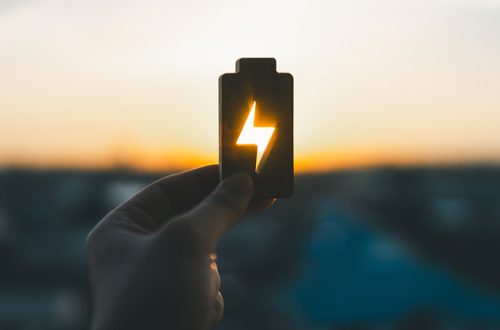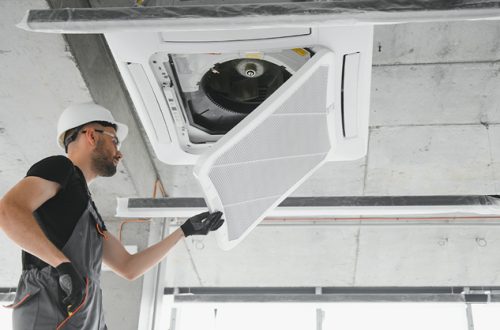Member’s Corner is a place for engineers to share their professional insights with other OSPE members. Every month, OSPE will publish a member written blog post on a pertinent issue in the engineering community. As a reader, you can engage in meaningful conversation with fellow OSPE members. The content of these blog posts are the viewpoints of the authors.
By Geoff Sheffrin, P.Eng., C.Eng.
Being green is a key goal in managing our climate crisis. We have a lot of green initiatives both, in action and developing. More on all of these in later editions.
But I am now talking about “cradle to grave” cost implications. I have found it a challenge to get solid data on the cradle to grave cost implications, but it cannot be ignored. By Cradle cost I mean – what does it cost to construct, commission, and set up, operate and then with the grave cost being the end-of-life portion. However – given we are focussing on green solutions – perhaps the better expression is “Cradle to Rebirth”. After all, if we are looking at sustainability, then re-use (or rebirth) becomes an important focus. Later, in the individual blogs, we will review the other cradle to rebirth aspect – the carbon footprint of each.
The Global Picture:
In 2020 approximately 17% of our global primary energy came from renewables with hydro being the largest at about 60% of that total. Wind, solar and several “others” make up the balance. This is the electrical generating portion of global power.
Reference came from “Our World in Data”. It does not include traditional biomass. Also, renewables make up about one quarter of our total global energy mix. What is the difference between the 17% and “about one quarter”? It is in the area of transportation and heating, both of which are more difficult / or will take longer to make exclusively green (though work continues) so not included in the 17%. These two sectors are indirect users of electricity to make them green whereas renewables are the direct use of electricity. Also, the indirect use often has the electricity being generated by fossil fuels – so definitely not green (yet).
I am often disturbed by the world saving solutions being green. Not that this is not what is required; it absolutely is required. But the implications always seem to focus on “here is the solution” as part of a diversified green energy mix. Absolutely YES……………. BUT:
None of these occur naturally. They do not spring up from Mother Nature. While each of them is green in its own way – they do not get there just like that. Let me explain further.
Cost Implications by Technology:
Each of the following will have a brief assessment of the cradle to grave / rebirth implications. These are not scientific BUT will be a judgemental comparison based on numerous sources and trying to cut through what is promotional as opposed to direct and real. Everything I note here is subject to discussion and verification. I am not trying to create a bible – just trying to stimulate conversation and thoughts.
- The initial list:
- Hydroelectric: Globally it is the biggest to date of our renewables. Offset by a very long life. There are several formats for hydro power but we will only look at four main ones for now. Conventional dams, pumped storage, run-of-the-river and tidal. High cradle cost / long life / modest in progress cost / closing cost – not much data since longevity is their main forte. Conventional dams probably have the highest cradle cost and a high carbon footprint from the concrete and steel used in their construction. This offset by what is usually a very long life span. A 100 plus years is not uncommon and some early systems date back centuries (though not in a modern format). Pumped storage is different. They are an almost instant demand peak load support system. They can deliver full power within minutes of being activated. ROR cradle cost tends to be much lower that conventional dams with also a long life span. Run-of-the-river (RoR) are similar to tidal with RoR being less structurally intensive that tidal. These RoR and tidal are much more diverse in their make up so I have not tried to nail them down in terms of cost. This will follow in the Hydro blog.
- Wind: Relatively high cradle cost / intermediate life span / moderately high extension cost / closing cost moderate to high. This is what I have seen so far. Front end cost is relatively high and is averaged out at about $2M per megawatt of power generated. Payback is relatively quick and is often making a healthy profit in less than 1 year. Maintenance costs seem to be quite high also and they need attention – often more than once per year. End of life seems to be a challenge. Often reported as a 20-year life span. Cost of removal and disposal is very high. So far, there does not seem to be a lot of recycling thought having gone into the design. A focus on “rebirth” would be critically useful. An engineering colleague of mine reports that one of his neighbours had a horrendous end of life cost and decided to just un-bolt it and let it fall over and decay. Sorry – there has to be a better way. Perhaps a new recovery industry based on better front end design detail. The draw back? Wind is variable and no wind = no power. Needs back up storage.
- Solar: Relatively high cradle cost / intermediate life span / needs maintenance attention / extension cost not known / closing cost moderate. A 1 MW power plant covers about 4 acres and costs about $2M to $3M GS VERIFY. While set up cost is relatively high (sun following types even more so), maintenance cost is moderate. If set up at a 150 angle the rain tends to help keep them clean. End of life – I need to find more data yet. They seem to have a relatively long life BUT need sunshine to be effective. No generation at night – so needs adequate backup storage.
- Hydrogen: Each of the four primary types has its own challenges. This is one of the few that generates alternative fuel. You can’t get much cleaner than hydrogen since the only pollution when combusted is water. However, getting there is the problem. Green hydrogen is the only totally clean fuel IF generated from electrical power and that needs to be green electrical power (no fossils). The other three types all require fossils in some way or another and then they each get us into various forms of carbon capture. If we had an abundance of electrical power – the reformer technology (for green) would serve us well but is very costly. Then, storage and distribution also add a lot of infrastructure cost. A perfect fuel for transport but costly to get there. Blue. Grey and turquoise also have their cost challenges and equally the distribution infrastructure remains the same as for green.
The follow up list: The following items do not yet cover everything we could and will cover, they are less clear cut in their cradle to grave / rebirth cost implications. I will note why against each of them below. ALSO, we will dig into all of these much more in their individual blogs.
- Biofuels: Cradle cost varies / conversion and transport adds cost / no closing cost BUT some CO2 emission but MUCH lower than fossils. Source types and usage makes this very variable.
- Geothermal: Relatively high cradle cost depending on the source / likely a long-life system with in-progress cost / closing cost not much data. These seem to be very much driven by location. Some parts of the planet are well equipped for this technology (Iceland for example).
- Oceanic: Very variable and not much data so far. This too is somewhat like the geothermal – location has a big influence and the technology varies as required. There seem to be many technical variants of this technology. This variety suggests that we perhaps explore the cost side when we get into this specific blog. A relative of RoR noted above.
- Fission: Very high cradle cost / long life with high maintenance cost but low cost per unit delivered / high closing cost. Here we are talking nuclear energy. More research required and will follow in its own section. While we have many antagonists in the nuclear field – we need to be able to get electricity from all sources possible. We just don’t and won’t have enough ability to generate power selectively. It has become clear that we can create safe nuclear capability. Chernobyl, 3-mile island and Fukushima are notable. But checking the history – it is clear that not only has much been learned but safety capability has also increased significantly. Statistically nuclear ranks to be almost as safe as wind and solar and 350 x safer that coal. Terrorists are probably a bigger factor. Nuclear waste is an important factor that detracts from this application. Watch for my blog on SMR’s (small modulars).
- Fusion – which to oversimplify – reproduces what sustains our sun in our solar system. We don’t know much about this one yet though the first fleeting capability has been reproduced on a lab scale. We will explore this one much further since in decades to come – it may become the “holy grail”.
- Other??? Stay tuned.
Watch for OSPE III “Climate Crisis – Solutions in Action”. The narrative in OSPE III will start with a global overview of electric power needs and then start to explore hydro-electric power – the largest world scale green solutions currently in operation.
Remember Movers make things happen – everyone else is a spectator. So, be a Mover.




Leave a Comment